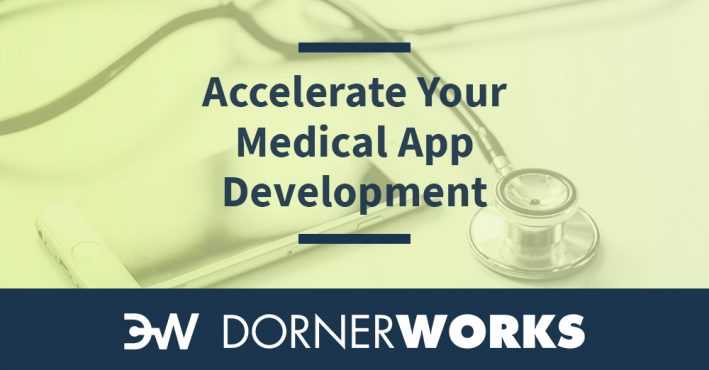
So, you’ve got a great idea for a health-related mobile app, or you have a medical device that needs a companion app.
Do you know what to do next?
Before we even begin to thing about design, we need to cover a few technical assumptions. Let’s make sure our docs are in order first:
With that groundwork squared away, here are some helpful tips on building your medical app beginning with engaging the experienced medical product development team at DornerWorks.

Develop some preliminary thoughts and direction for the app. But don’t overthink things. Remember, you’re hiring a team to help you.
Coming to an engineering team and telling them exactly what to build has two downsides: It’s not capitalizing on the team’s expertise and years of experience, and it uses up far too many of your own resources.

Practically, we recommend developing the primary use cases for your mobile app. This usually entails describing who you think your primary users are and what their motivations will be for using your application.
How they will use the app most commonly and what is the direct benefit they will receive?
Once you have a general idea of the app flow, you can build preliminary mock-ups or wireframes (an easy-to-use tool like Balsamiq or Figma can help). Tools like these are helpful for communicating intent, but they are best used as a high-level concepting tool. So don’t put too much time adding detail into them. The details come with the mobile app implementation itself.

Lastly, think about stages for your product’s development. What is the minimum viable feature set to get your customers downloading the app and realizing the value?
Too often product makers want to shoot too far with features and stretch their budget and schedule far too much to be effective. You don’t need and app with all the features in your roadmap complete when you launch, so focus on a few things and do them extremely well for the launch. Post-launch, there is plenty of time to iterate and add features as your customer base grows and you continue to get valuable feedback from real-life users. In fact, you may find that some of the core features you were willing to invest in early are secondary to your customers, and other features you didn’t envision provide more value to your paying customers.
This is the homework we recommend before you engage with us on your app development. You don’t need to master software development processes, interface control documents, proper requirements or development standards like IEC 62304. We can handle that for you.

The next step is to schedule a meeting with a business development manager. This could be over a phone call, in-person or via video conference – whatever works best for you. This is our chance to make introductions, introduce the project and begin the journey of developing your mobile app with you. Just give us a shout when you’re ready.
This initial introduction will likely lead to a meeting with a wider development team – typically with engineers and subject matter experts. This is a chance for the team to ask deeper technical questions and begin to form an understanding of the product you want to make.
At this point we should be able to provide what we call a Rough Order of Magnitude (ROM) quote. It’s a good checkpoint to see if we’re on the same page regarding the project scope and effort.

Assuming all looks good so far, the development team will turn their attention to providing a proposal for the development of your mobile app. This will include the proposed scope of the project, the deliverables, high level functional description and a more detailed cost breakdown.
There are times when a project is too big and complicated to provide a proposal for it all at once, at least with any level of confidence. In these cases, we would recommend a phased development approach and provide a detailed proposal for just the first phase. Follow-on phases would have their own proposal when possible.
After you’ve had time to review the proposal, gained the needed approvals and secured the funding, it’s just a matter of issuing a purchase order (PO) to DornerWorks to kick off the development! Once we receive a PO our management will work to assemble the technical team, a project manager and the engineering team needed to deliver your project successfully. We’ll schedule a formal kick-off meeting with our technical team and yours and that’s when the real fun begins.
Schedule a meeting with us when you are ready to develop your medical app! We’ll guide you through the process of turning your idea into reality.